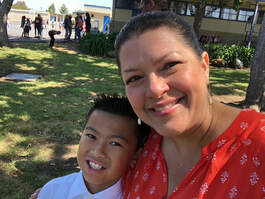|
In “What Does Personalized Learning Mean? Whatever People Want It To,” Benjamin Harold describes the broad range of definitions that encompass Personalized Learning: “Algorithm-driven playlists? Grouping students based on digital data? Letting teens design projects based on their personal interests? Adaptive software that adjusts to each student's skill level? Customized activities to help kids develop a growth mindset? Check, check, check, check, check.” Similarly, there are several different variations and levels of competency-based and personalized learning happening at my school. I feel that we manage the use of personalized learning and competency-based learning in a way that is well suited for the elementary level. We use adaptive software like iRead, ST Math, System 44, Mobymax, and FASTT Math. Several of these programs give students choices within their scope and sequence and/or allow them to skip over content if they can demonstrate competency. These programs are also used as a “may do” option in many classrooms. Students often have a menu of learning or activity choices, ”May Do Lists,” for independent learning during small group or universal access time. Many of our teachers offer students choices for learning, and demonstration of learning, with PBL projects. For example, students can make choices about which marine mammals they want to learn about for their projects, or perhaps whether they want to demonstrate their learning with a poster, a video, or class presentation. Another example is that some of our teachers utilize pre-tests from our math curriculum, Bridges, to allow students to demonstrate competency before embarking on whole-class lessons. Katie Varatta’s concept of how competency-based learning works seems straightforward. She says, “You would analyze what mastery looks like, and design focused lessons and activities that would support those levels. This lesson addresses the entire group, and then you would move into workshop model where everyone works towards the daily learning target... While they are working, you might be pulling small groups to go deeper on the focused mini lesson or individuals that need further interventions or support.” As simple as that all sounds, however, there are many more steps involved in this process than are spelled out. Developing student protocols, lesson building, behavior management, assessment, early finishers, are just a few of the details that add to the complexity of such an endeavor. I think my favorite selection this week is the short video, “Personalized Learning: What is it?” I like this selection because it reminds us that any approach needs to be vetted by research and evaluated for its effectiveness. So true are the cautions that students tend to pick the easiest options when given a choice, and that they don’t always manage their time (or attention) well while on educational software. These are issues that need to be constantly monitored at our school. This video should be the official disclaimer for anyone contemplating competency-based learning or personalized learning.
7 Comments
 Before embarking on my research project back in September, I knew I wanted to focus on finding a way to help our struggling primary students who entered school already far behind their classmates in early literacy skills. My research study developed into a parent led literacy program for Kindergarten students. After all the hard work of doing the research and developing a program for families to follow, I was thrilled to discover a positive relationship between time spent doing the program and student improvement in letter-sound fluency! I now knew that a parent led intervention program focused on letter-sound knowledge could positively affect intensive students’ letter-sound fluency. However, what I discovered along the way put a damper on my celebrations. I learned that even though the program seemed to have a positive effect, I couldn’t get everyone to participate regularly enough to help their children. It reminded me of medication. You can give patients the medication, but you can’t make them swallow the pills. Although that realization was a bit disheartening, it reminded me about why I became a teacher in the first place. I became a teacher to work with children. I had previously been a health educator for low-income pregnant women for many years and after a similar realization described above, I decided that I really wanted to work with children directly. With all this in mind, my next steps will still focus on these students and helping them improve their early literacy skills. Considering that my position as an Academic Specialist is not directly with students or parents, but more with teachers, here are the questions that will guide these next steps:
|
Jona SandauI'm a student in the Innovative Learning Master's Program at Touro University. I'm really excited to make a difference for my students! Archives
March 2019
|
 RSS Feed
RSS Feed